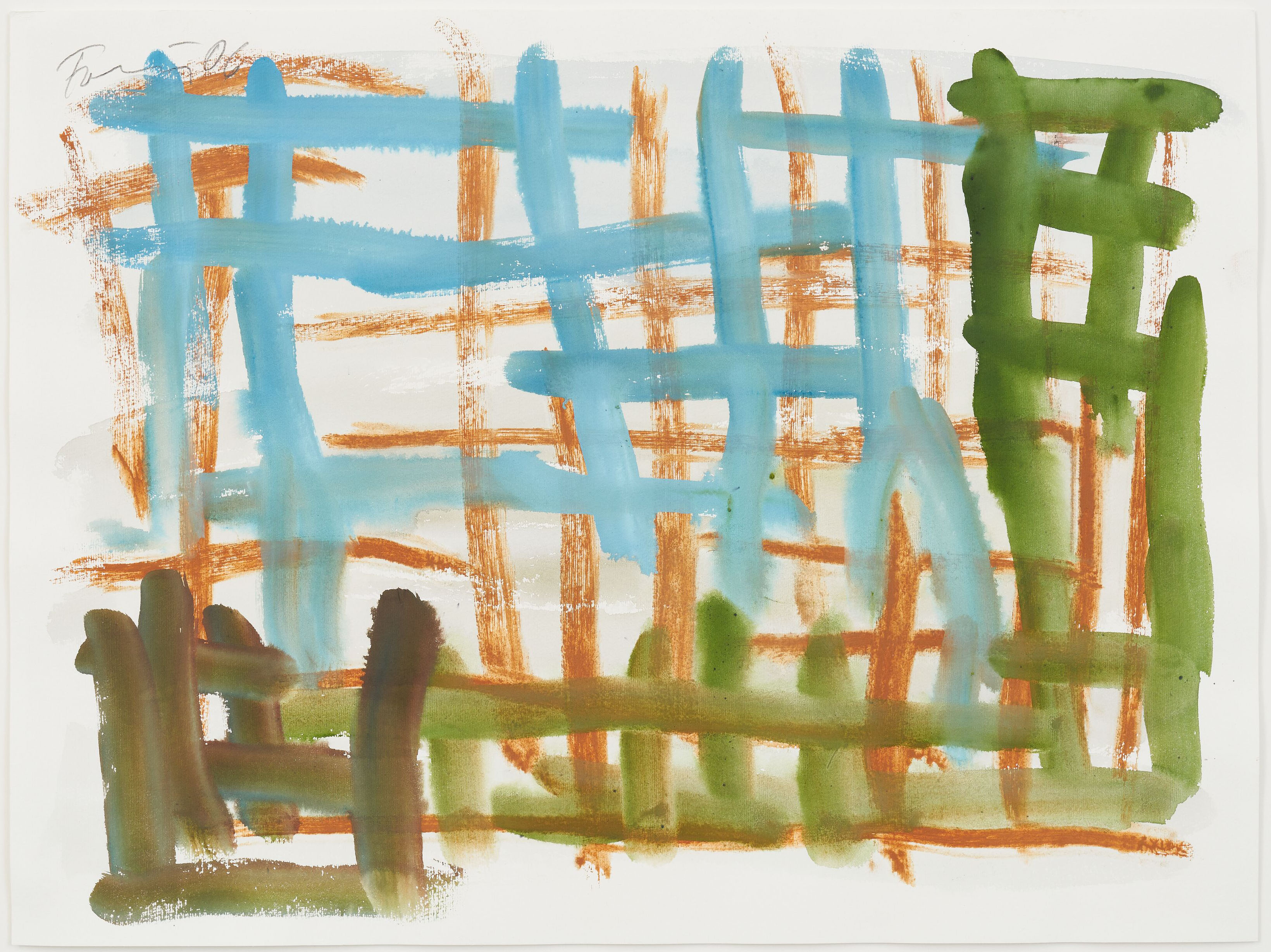Günther Förg
Arbeiten auf Papier / Works on Paper / Oeuvres sur Papier: 1975 – 2009
27 September – 20 December 2024

ABOUT THE EXHIBITION
The largest survey exhibition of Günther Förg’s works on paper, spanning over 30 years, on view at Hauser & Wirth Zurich, Limmatstrasse. Förg’s works on paper were an integral part of his multi-disciplinary practice (which comprised drawing, painting, photography and sculpture) and ran parallel to his works on canvas. Executed in a variety of materials, from watercolor, acrylic and oil to charcoal, chalk and ink, these creations are considered works in their own right; instead of using them as preparatory sketches for paintings, the artist would often be inspired to paint and draw on paper after experimenting with his large-scale canvases. The exhibition includes well-known series, including his Grid, Color Field, Grey and Spot works, alongside lesser-known pieces, such as early works on paper from his studies in Munich, or later series such as Mostly Landscapes.
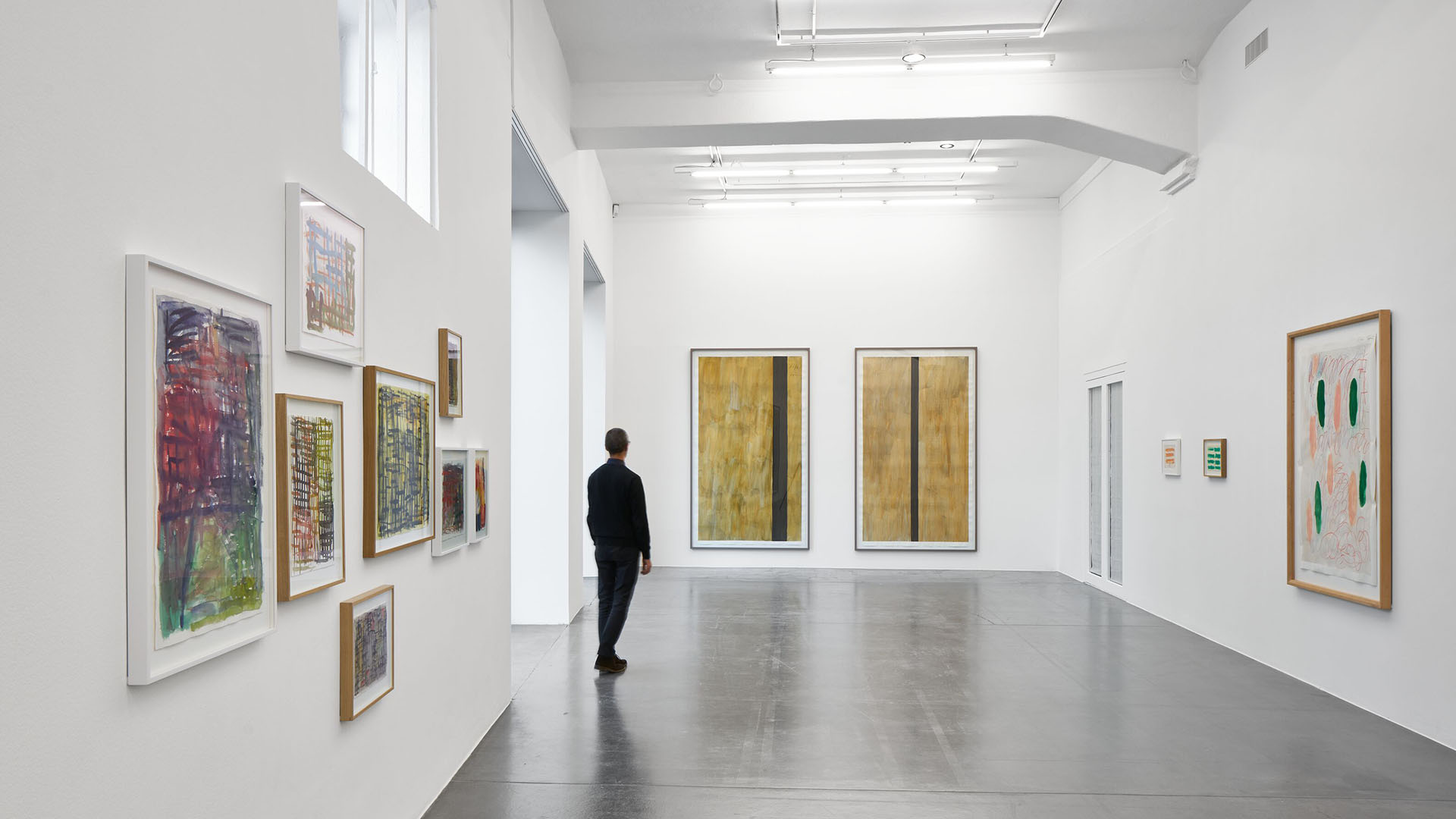
The earliest works on view are from 1975, during which time he was studying under Karl Fred Dahmen, one of the most influential figures of Art Informel, at The Academy of Fine Art Munich. Executed on lined note-book paper with isolated pink or green sections of gouache and overlined with a ball point pen, these works are early examples of Förg’s engagement with artists such as Blinky Palermo or Cy Twombly, who he first came across during his studies. Experimenting with and expanding their visual language through color and form, the works, titled ‘Landschaft (Landscape)’ (1976) and ‘Green Paul Veronese’ (1975) — the latter referencing the pigment of green used by Renaissance painter Paul Veronese—are at once evocative of landscapes yet resolutely abstract.
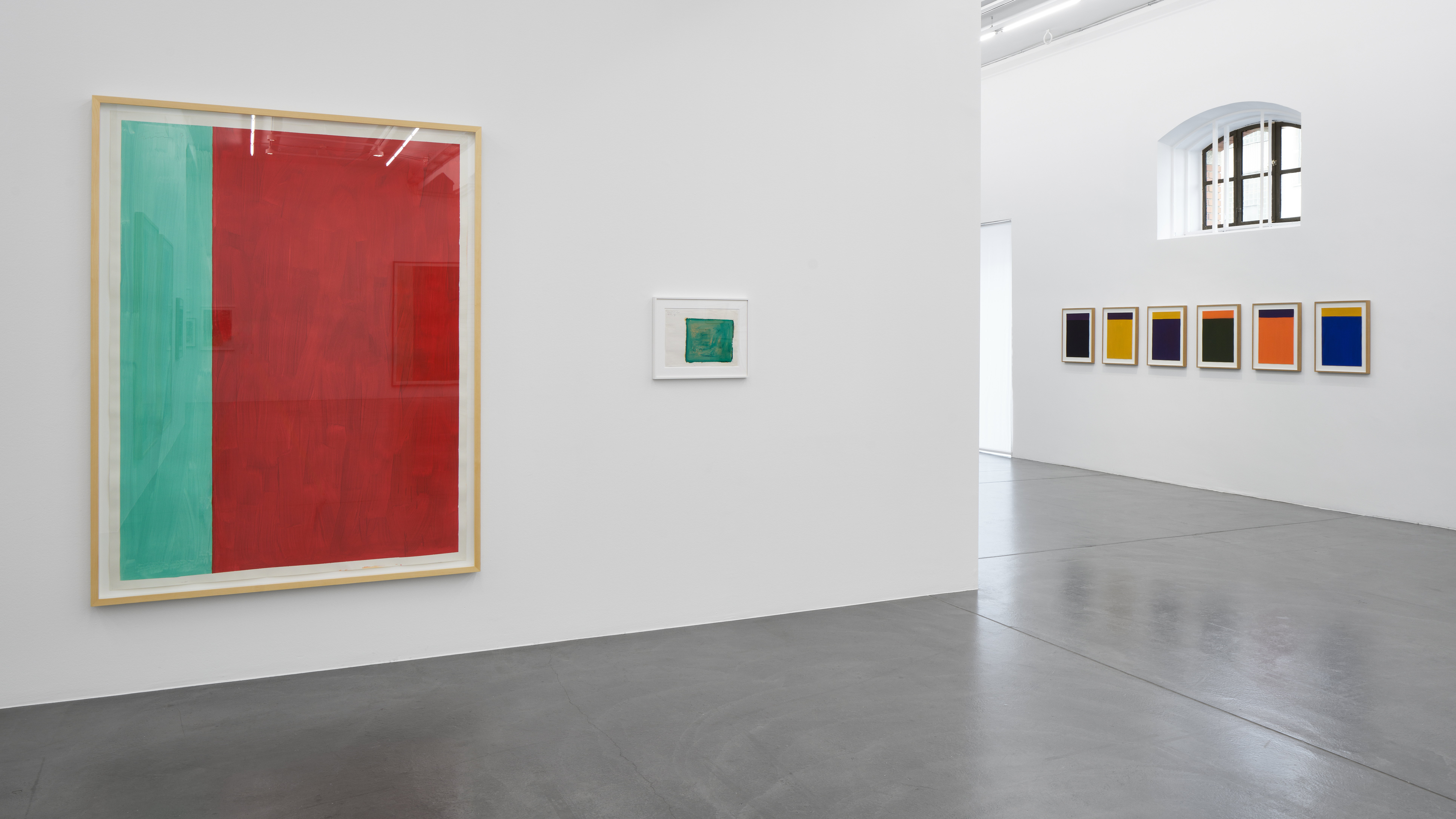
After a short break from the medium, when Förg focused mainly on his photographic work, he returned to painting in the mid-1980s with his Color Field paintings, geometrically partitioned fields of color. Painted with acrylic on Canson paper, the gestural immediacy of the works and thinly applied layers of color subvert the modernist notion of the sublime, despite their compositions being evocative of the densely colored experimentations of Mark Rothko and Barnett Newman.
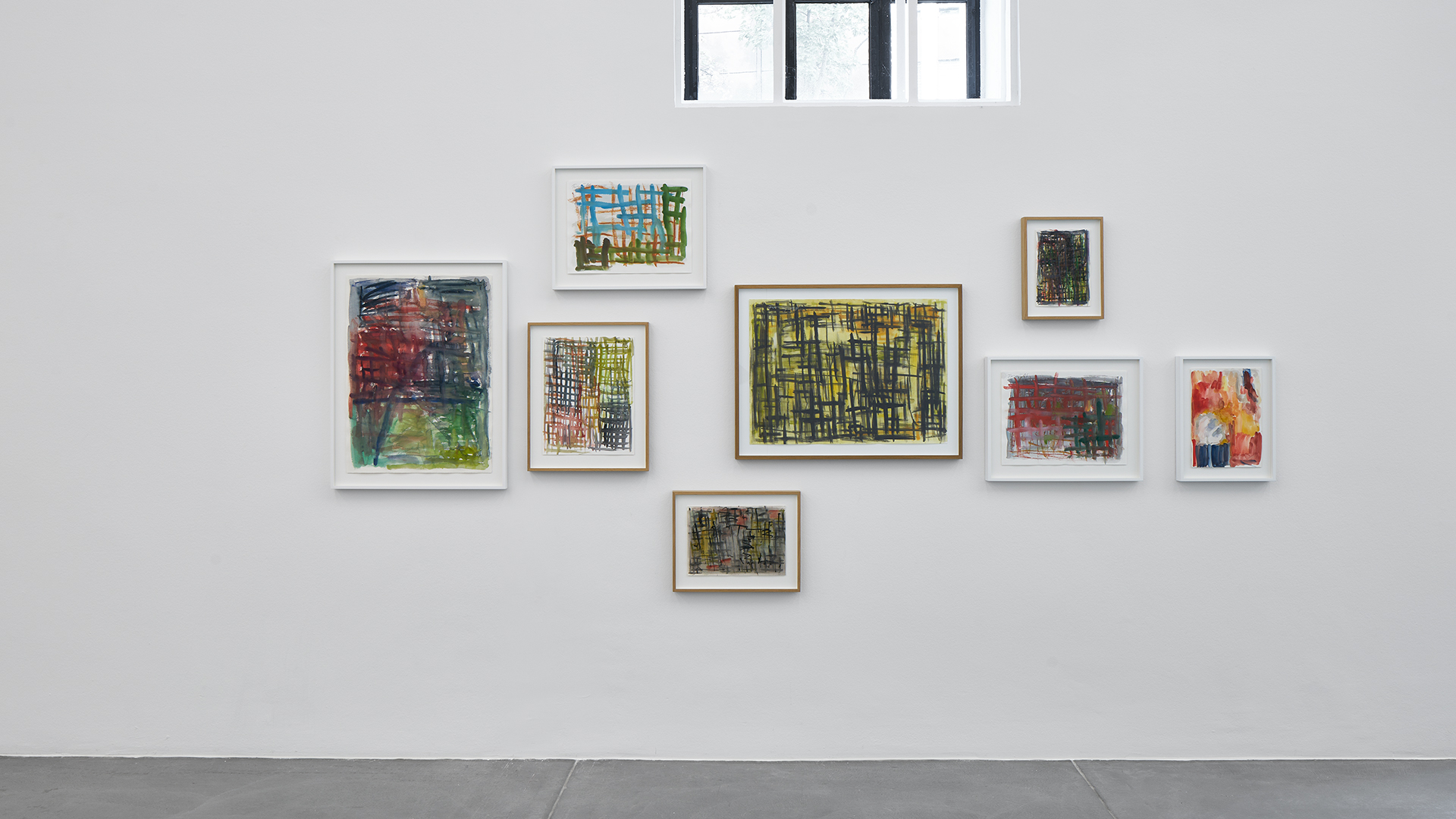
In contrast, Förg’s renowned Grid works from the mid-1990s, executed here in watercolor on paper, demonstrate a visual shift away from his Color Field paintings. Identified as an emblem of modernism, the artist engages with the grid through expressive layers of color and paint, threatening to dissolve any distinctions between negative and positive space. He takes this notion a step further in his series of Grey paintings, begun in the 1970s with examples from the 1990s on view in Zurich. Förg immerses the picture plane with infinite tones of grey by covering cardboard with black gesso and layering geometric hatchings of washed-out streaks of chalk, introducing a tonal complexity within a deconstructed grid formation.
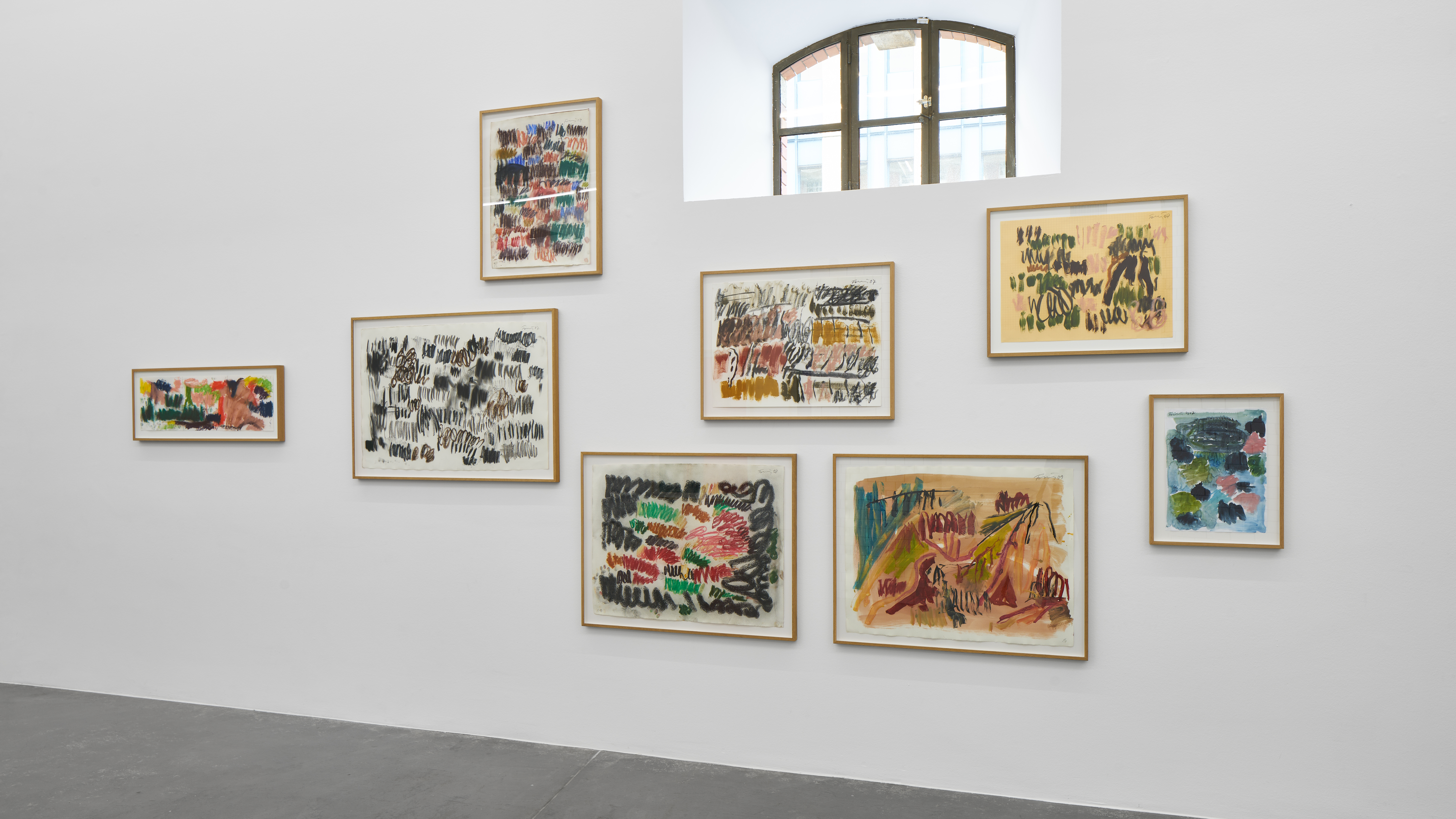
Works from the 2000s include expressive watercolors or gouaches which abstractly or explicitly depict landscapes, among them his Mostly Landscape series. These are shown alongside some of Förg’s later drawings using charcoal and oil on paper, experimenting with the negative space of the paper through gestural mark-making. He developed these expressive, dynamic brushstrokes by introducing bright dabs of color for one of the last series he ever made, his celebrated Spot paintings (2005 – 2010). Within these works on paper, Förg transformed the previous lattice structures from his series of Grid paintings into rhythmic, gestural marks that appear to float across his paper, doing away with any previous sense of order. In these works, the brushstroke itself becomes the main protagonist, representing an ultimate return to expressive painting, indicating a completion of sorts—a full-circle arrival at painting as a synthesis of experimentation, rooted in art history.
About the Artist
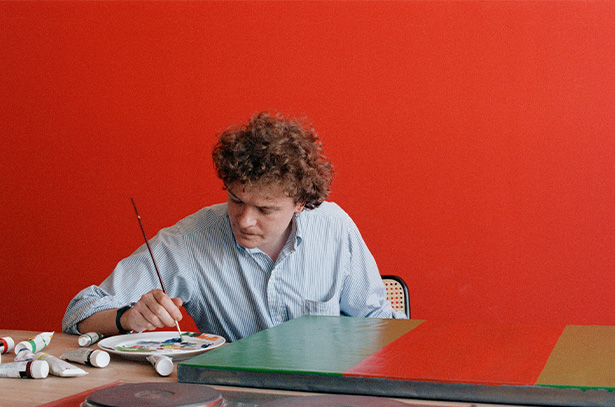
Günther Förg
Günther Förg was born in 1952 in the region of Allgäu, Germany. His career began in the early 1970s as a student at The Academy of Fine Art Munich. During his studies, Förg developed a practice grounded almost exclusively in grey and black monochrome. These early investigations into gray—also called ‘Gitter’ paintings—demonstrate the beginning of a lifelong commitment to conceptualism. As he stated, ‘Grey is nothing: not white, not black. Something in between. Not concerned with the figure. Something free.’ While the artist later incorporated color into his monochrome series, his use of gray represents a neutral foundation from which he conceived his oeuvre.
In the 1980s, Förg began utilizing photography, printing large-format images of culturally—and politically—significant architectural structures, from Bauhaus buildings in Tel Aviv to Fascist constructions in Italy. This diversification of material and form led Förg to abandon painting altogether, and for some years he pursued a purely photographic practice as a reaction against painting itself. He would later reflect that his use of photography was a method of ‘working closer to reality,’ stating, ‘what one paints is not reality.’
Throughout the 1980s and 1990s, his photographic works achieved critical acclaim and were exhibited at major museums internationally, including the Kunsthalle Bern in Switzerland and The Solomon R. Guggenheim Museum, New York NY. During this time, Förg also began experimenting upon the exhibition space itself, painting over the gallery walls, and positioning photographs against his own paintings.
Förg entered a new phase of experimentation in the late 1980s, which brought him back to painting, but also included the embrace of new materials for him, such wood, copper, bronze, and lead. Förg’s renowned lead series—acrylic painted on sheets of lead and supported by wooden frames—blurs the line between painting and sculpture in an evolution towards object-making. Also initiated during the 1980s, his bronze sculptural practice indicates a painterly quality, with indentations and marks that are reminiscent of a brushstroke, as he attempted to replicate a moment frozen in time.
In pursuit of further artistic experimentation Förg began producing fragmented body-part sculptures in the early 1990s, describing this arrival at figuration as inevitable. These new works embraced the materiality of their making; the heavy, weathered, and scratched surfaces of the sheets of metal, lead, and wood hint at something that is simultaneously formal and expressionist, geometric and free.
By the beginning of the 21st century, Förg’s paintings had left the formality of Minimalism behind. In a new direction, he incorporated a brighter palette and more expressive hand with a series of grid-like marks and intersecting colors. These paintings—called ‘Gitterbilder’ (grid paintings)—command a similar freedom of form and sensuality that has led to critical comparisons to Cy Twombly. Other works from this era portray vast canvases of negative space interrupted by colorful, gestural hatching and mark-making. Förg’s ultimate return to expressive painting indicates a completion of sorts—a full-circle arrival at painting as a synthesis of experimentation, rooted in art history. In the artist’s own words, ‘I think painting is a resilient practice; if you look through the history of painting it doesn’t change so much and we always see it in the present. It is still now.’
Image credit: © Wilhelm Schürmann, Herzogenrath
Current Exhibitions
1 / 9











